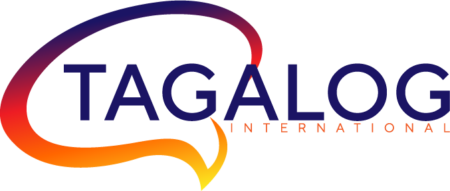Course Outline
For Adults (ages 18 and up)
MODULE 1: Talking about myself using basic expressions (9 lessons, 1st one is FREE)

Learning Plan: Module 1 – Beginner Level
- Learners will begin to recognize familiar words and basic sentence patterns when spoken slowly and clearly.
- Within the context of one’s self, family, and home, learners will be able to speak in brief and patterned sentences. They will also be able to react to certain situations by talking about their basic emotions.
- Learners will be able to construct simple sentences that start with “I have” and “I want.” They will also be able to provide basic information about themselves and others (e. g. name, age, and place of origin).
- Basic usage of the 1st & 2nd groups of pronouns will be covered in class.
MODULE 2: Understanding verbs, actors and objects
(8 lessons)
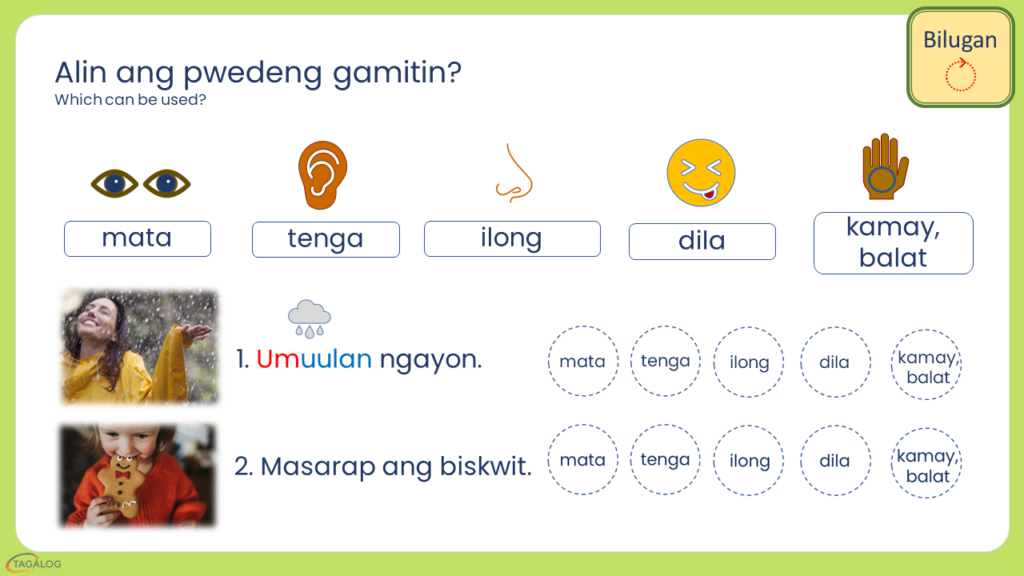
Ang Limang Pandama (The Five Senses)
Learning Plan: Module 2 – Beginner Level
- With a continued focus on their own selves, families, and homes, learners will be introduced to basic verb conjugations (state verbs, action verbs, and verbs of senses).
- Alongside verb conjugations, learners will learn about adverbs of time (days of the week, yesterday, now, and tomorrow).
- Learners will be able to identify common affixes and how they are attached to the root of the verb.
- Learners will be able to talk about their favourite things and what they need.
- Commonly used phrases that allow learners to discuss daily activities and hobbies will be taught.
- Learners will be able to provide more basic personal information about themselves and others.
MODULE 3: Understanding sentence structures in Tagalog using high-frequency expressions (8 lessons)
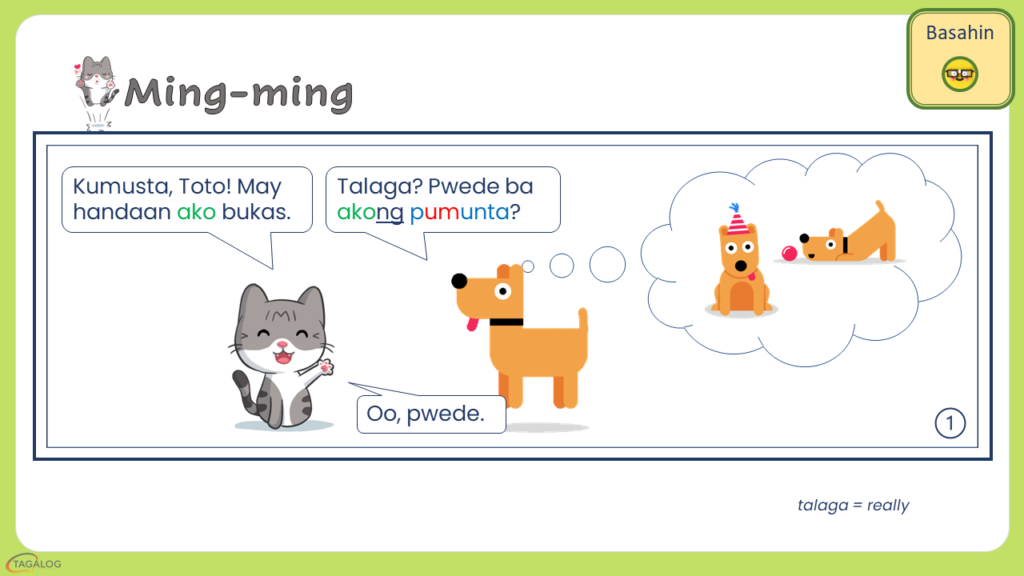
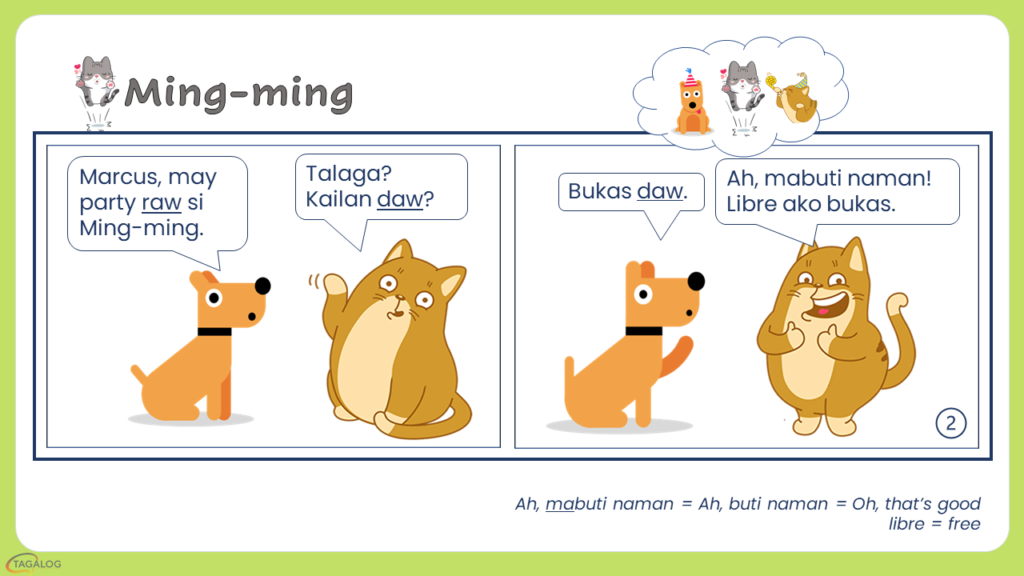
Sabi Nya, Sabi Nila (He/She Said, They Said — Reported Speech)
Learning Plan: Module 3 – Beginner Level
- While keeping the context focused on self, family, and home, learners will be introduced to nearby communities (i.e. work environment, wet markets, malls, restaurants).
- Learners will practice basic expressions that will enable them to function in their immediate environment, such as:
- looking for things, places, and people;
- ordering at a restaurant;
- buying items.
- Learners will learn about basic verb conjugations, alongside proper use of pronouns. They will be introduced to imperative verbs.
- Fundamental rules in using definite and indefinite nouns will be explained to the learners.
- Learners will get sufficient training in using high-frequency verbs.
- Learners will be taught how to make small talks at Filipino parties.
MODULE 4: Mastering the three groups of pronouns and learning about topics related to work, study, and leisure. (8 lessons)
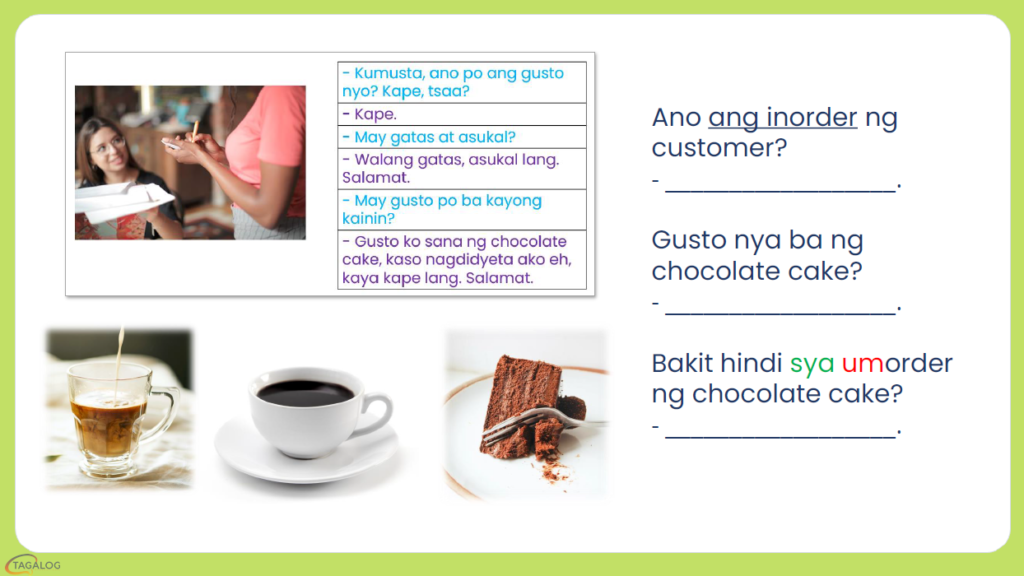
Sa Restawran (At the Restarurant)
Learning Plan: Module 4 – Early Intermediate Level
- The three groups of Tagalog pronouns and markers will be practiced more rigorously by learners.
- As the context focuses on communities and nearby environments, learners will learn how to discuss their jobs and workplaces. They will get a chance to talk about travelling.
- Learners will learn about the difference between active and passive sentence structures and how to paraphrase.
- Learners will gain fluency through conversation-type content, more dialogue exchanges, and problem-solving.
- Fundamental sentence patterns for expressing opinions will be taught to the learners.
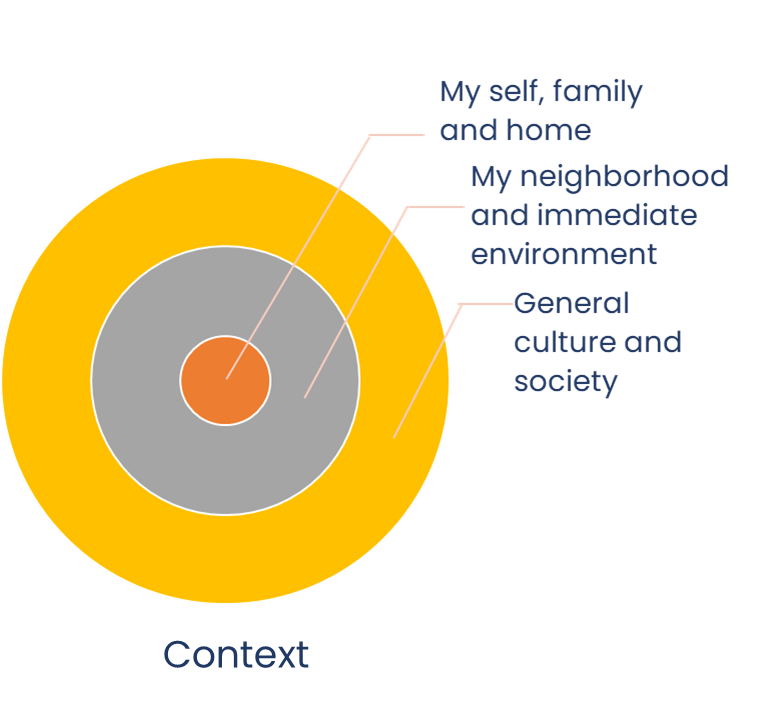
Mid-Intermediate level
Teachers and learners plan the materials together in order to meet the learner’s individual needs while ensuring that the Independent User level specified in the CEFR guideline is achieved.
$7.25 USD per class
30-minute, one-on-one classes or group classes of 2 students
